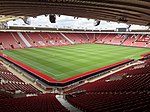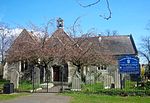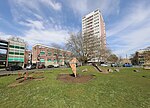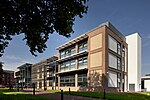River Itchen, Hampshire

The River Itchen in Hampshire, England, rises to the south of New Alresford and flows 26 miles (42 km) to meet Southampton Water below the Itchen Bridge. The Itchen Navigation was constructed in the late 17th and early 18th centuries to enable barges to reach Winchester from Southampton Docks, but ceased to operate in the mid-19th century and is largely abandoned today. The river is one of the world's premier chalk streams for fly fishing, amenable to dry fly or nymphing. The local chalk aquifer has excellent storage and filtration and the river has long been used for drinking water. Watercress thrives in its upper reaches.Much of the river from its source to Swaythling is classified as a 748.5-hectare (1,850-acre) biological Site of Special Scientific Interest (SSSI), and a Special Area of Conservation, of which the 9-hectare (22-acre) Hockley Meadows nature reserve is a part. The Itchen estuary is part of the separate Lee-on-The Solent to Itchen Estuary SSSI.
Excerpt from the Wikipedia article River Itchen, Hampshire (License: CC BY-SA 3.0, Authors, Images).River Itchen, Hampshire
William Street, Southampton Northam
Geographical coordinates (GPS) Address Nearby Places Show on map
Geographical coordinates (GPS)
| Latitude | Longitude |
|---|---|
| N 50.9052 ° | E -1.38565 ° |
Address
Ocean Quay Marina
William Street
SO14 5QH Southampton, Northam
England, United Kingdom
Open on Google Maps










